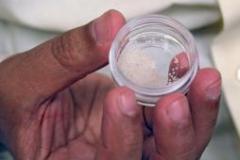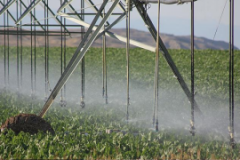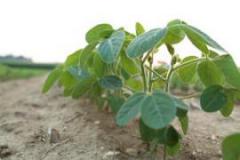News
-

OSHA Forms Alliance to Accelerate Agribusiness Safety Efforts
OSHA, along with The Fertilizer Institute (TFI) and the Agricultural Retailers Association (ARA) are partnering in an effort to increase safety efforts in the agricultural retail and supply industry.
The two-year alliance will focus on the safe storage and handling of ammonium nitrate and anhydrous ammonia – materials used in fertilizers.
Read More -

New method of fertilizer production can better suit the needs of farms in Africa and around the globe
Nitrogen, phosphorous, and potassium are the three elements that support the productivity of all plants used for agriculture, and are the constituents of commercial fertilizers that farmers use throughout the world.
Read More -

Recycling fertilizer? South Dakota State researchers test ways to reduce and reuse runoff from farms
What if you could capture the fertilizer that washed away with the rain and reuse it on your field? A pair of South Dakota State University professors is studying a way to do just that.
Dr. Laurent Ahiablame, from the department of agricultural and biosystems engineering, teamed up with Dr. Srinivas Janaswamy, from the department of dairy and food science.
Read More -

15 Cost-Effective Fertilizer Tips
The following 15 pointers will help you get the most from your phosphorus (P) and potassium (K) fertilizer investment. They come from Dan Kaiser, University of Minnesota Extension nutrient management specialist.
1. Soil-test regularly and follow those recommendations. Although soil tests aren’t perfect, they’re your best indicator of nutrient sufficiency.
Read More -

Yakima Valley Hop Growers Start Spring ‘Coaxing’ of Crop
The Yakima Valley is the nation’s largest hop producer, with three-quarters of all hops grown in America coming from its fields. Growers are off to a slightly slower start this season because of wet weather.
By
Yakima Herald-Republic
MOXEE, Yakima County —
Read More -

Online calculators help growers improve nitrogen, water efficiency - meet regulatory requirements
The Almond Board of California has created a tool - the Almond Nitrogen Calculator - which not only helps you manage your nitrogen applications for efficient fertilizer use, but also generates a Nitrogen Management Plan as required by the Irrigated Lands Regulatory Program.
As we await proposed changes to the Irrigated Lands Regulatory Program (ILRP), current requirements are still in place for all Central Valley Water Quality Coalitions, including farm evaluations, nitrogen summary reports, and a sediment and erosion plan.
Read More -

No More Gyp Stacks? Engineers Developing Way To Make Fertilizer Without Nasty By-Product
FORT MEADE, Fla. - When that radioactive sinkhole opened up earlier this fall in Mulberry, it drained more than 215 million gallons of toxic water from what’s known as a phosphogypsum stack, or ‘gyp stack’ for short.
Gypsum is the necessary evil in making fertilizer — it’s the toxic waste you can’t avoid.
But that might not be true much longer.
Deep in the far-back country of Polk County is a group of engineers possibly sitting on the future of fertilizer.
Read More -

Injection System Designed for Variable Rate Irrigation, Fertigation, Chemigation
Precision agriculture powered by GPS technology—at first a novelty—has now become the norm, driven in part by economic necessity. Putting fertilizer where it is most needed, in the precise amounts required, improves both input utilization and final yields.
That variable-rate technology, first applied to dry fertilizer application, is now beginning to revolutionize the irrigation industry. A new world where a network of sensors constantly monitors soil moisture conditions and directs systems capable of variable-rate irrigation is rapidly becoming a reality.
Read More -

Analyst Predicts at Least 3 Million More Soybean Acres in 2017
“Last week’s WASDE report came and went without much of a stir in the stock market. Producers now need to turn the focus to the weather in South America.
According to Chip Nellinger of Blue Reef Agri-Marketing, Argentina has seen dry weather, but it hasn’t affected yields. If there’s no rain for that area, he believes it will build weather premium into the market.
Read More -

Farmers Narrowly Dodge Environmental Storm
“Narrow escape only emphasizes the importance of sound nitrogen management
Now would be a good time to thank Mother Nature. She saved many farmers from an environmental black eye by preventing what could have been a perfect storm of nitrogen pollution this past spring.
Next time we might not be so fortunate, warns Farm Journal Field Agronomist Ken Ferrie. The perfect storm that wasn’t shows how critical it is for farmers to be the best possible nitrogen stewards.
Read More
